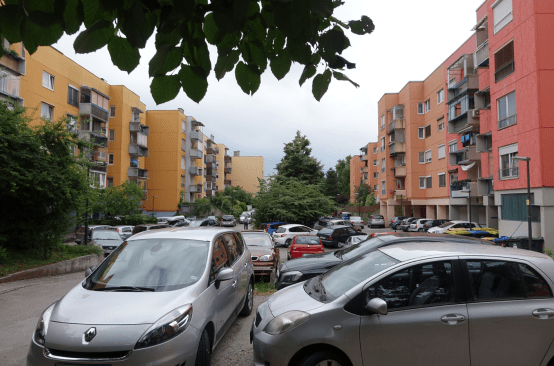3. WEAK POINTS OF MODERNIST NEIGHBOURHOODS:
Most neighbourhoods were not realised in their entirety – between the design and the realisation, the initial projects were changed either in terms of programme or the use of space, mostly on account of political or economic pressures. The neighbourhood was seen primarily as an organised means of residential construction; as the community aspect was not a priority, the accompanying programme was not of key importance; hence, it was often realised in a much-reduced way. The consequences of the compromises between expert solutions and political and economic conditions are felt by the present-day inhabitants of the neighbourhoods on a daily basis – a dire lack of parking spaces and a deficiency of public programme. A shortage of spaces for inhabitant interaction is reflected in loosely knit communities and a poorly developed sense of belonging, resulting in the absence of common attitude regarding the management and development of the neighbourhoods.

During last few decades, large metamorphoses of neighbourhoods began; unfortunately, the uncoordinated individual interventions on the building’s exteriors and energy efficiency refurbishments, disrespectful to the original architecture, have spoiled the visual appearance of the buildings, threatened architectural authenticity, and eroded the coherence of entire neighbourhoods, which are being transformed into unrecognisable complexes with a ruined identity.